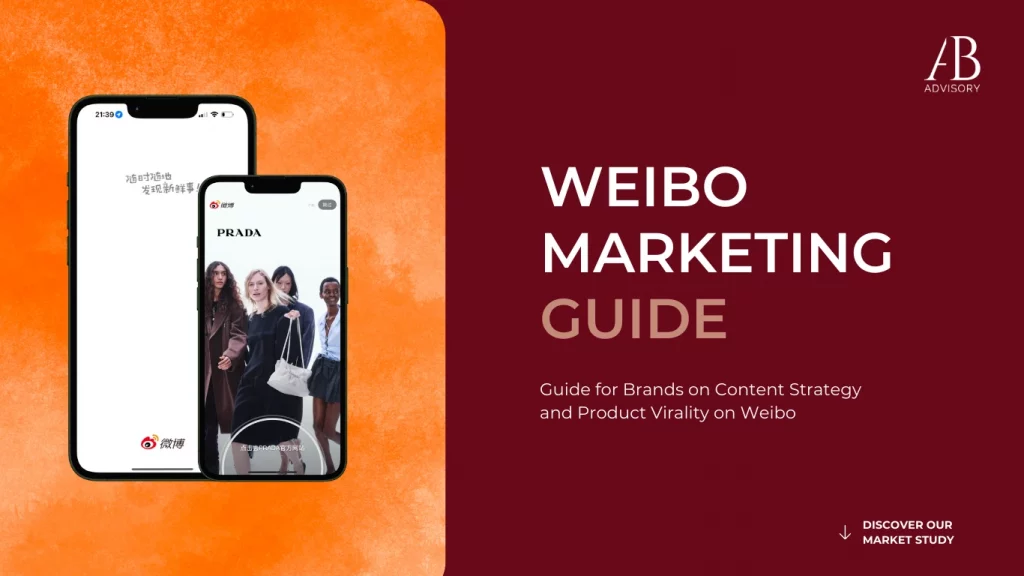Weibo remains one of the most influential social media platforms in China. With 587 million active users, it is a vital touchpoint for brands seeking visibility, engagement, and sales growth. Combining real-time trends, KOL collaborations, exposure and Tmall e-commerce integration, Weibo offers unparalleled opportunities to shape conversations and drive business. If your brand wants to break through in China, Weibo marketing isn’t optional. It’s essential.
At AB ADVISORY, we help international brands turn Weibo into a strategic growth engine. In this guide, we share our Weibo marketing insights on how to leverage it for powerful brand exposure in China – and why partnering with local experts makes all the difference.
Key Takeaways:
- Weibo is known as the “Chinese Twitter” but offers more features for building brand awareness
- It gathers 587 million active users and 257 million daily users
- On the platform, 80% are Millennials and Gen Z
- Weibo is a leading platform for celebrities, KOLs, making it essential for strong brand exposure
- Weibo used a tiered system to classify users from individuals to KOLs and brands
- Weibo offers display and promoted ads like Destination Page, Hot Search, Hashtag Promotion, Fan Headlines, Super Fan Pro
- Weibo can generate nationwide conversations and represent huge cultural influence in China today
- Weibo supports e-commerce integration with Tmall and helps you convert engagement into sales
Let’s dive in.
What is Weibo?
Literally meaning “microblog” (微博) in Chinese, Weibo combines the immediacy of Twitter with the visual appeal of Instagram and the reach of Facebook. Users can post short or long text, images, videos, and multimedia content – all amplified by a powerful trending and hashtag system.
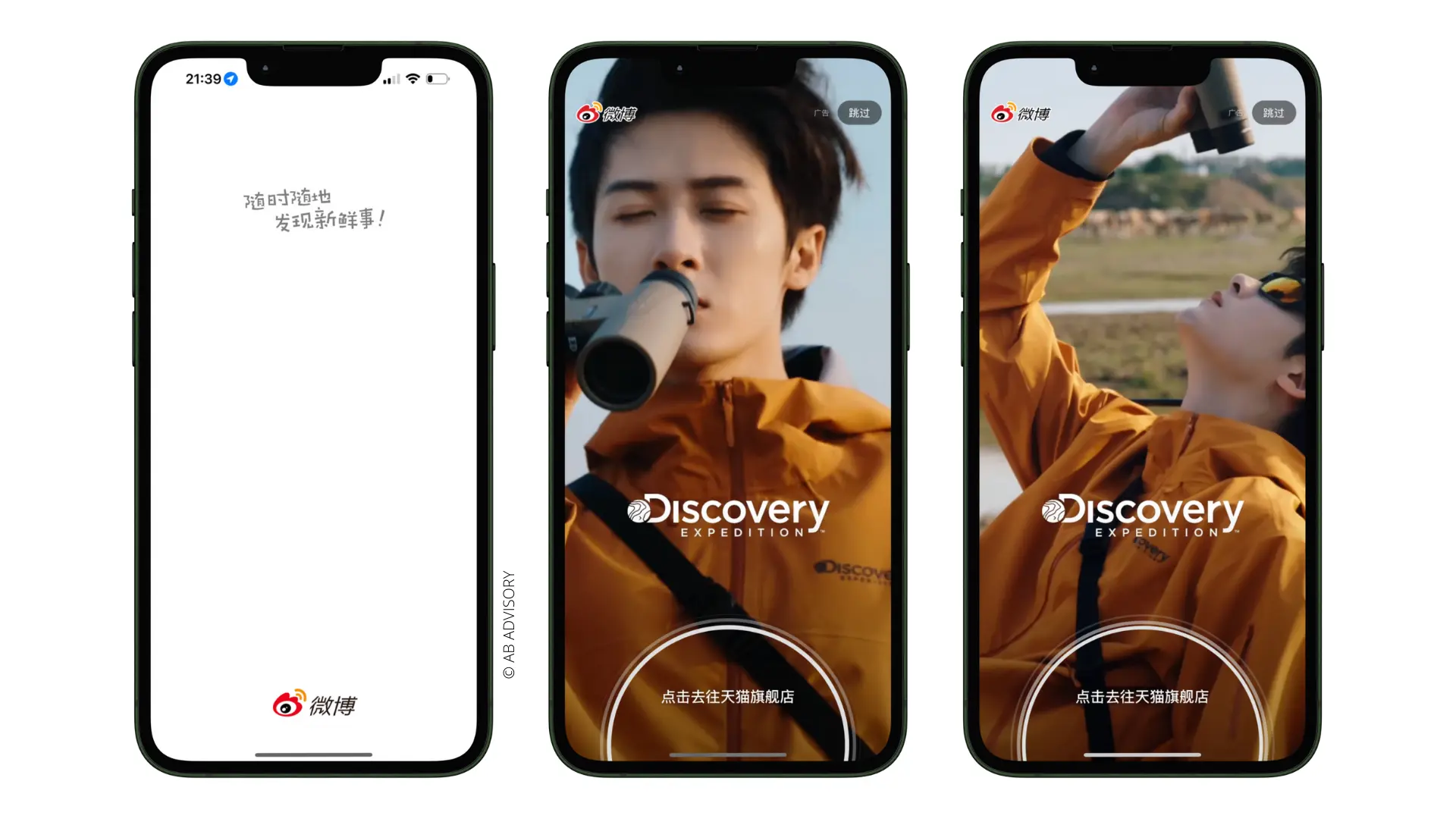
From its 2009 launch to its rebrand in 2014, Weibo has evolved into China’s public conversation hub, especially for entertainment, fashion, lifestyle, and culture. Celebrities, brands, and media outlets all use it to influence opinion and inspire purchases.
One tip, aligning your content with Weibo’s trending topics can catapult your brand into the national spotlight overnight.
Weibo, The Chinese Twitter
Weibo is often compared to Twitter but it also shares similarities with Instagram and Facebook. I think it might be interesting to go over them, especially if you use Facebook, Instagram, and Twitter for your brand.
Let’s compare the differences and similarities between Weibo and Western platforms:
- Weibo vs Twitter: While Weibo has started as a micro-blogging platform, it didn’t have any character limits like Twitter. Weibo supports long-form posts, multimedia content, and e-commerce integration. Both Weibo and Twitter are known for real-time updates. However, Weibo’s trending topics and hot search are more influential for brand exposure.
- Weibo vs Instagram: Weibo can be compared to Instagram because all celebrities have an official Weibo account. Like on Instagram, celebrities on Weibo usually have a huge follower base, reaching several millions and hundred of millions of followers.
- Weibo vs Facebook: Weibo is similar to Facebook from the advertising perspective. The advanced advertising tools on Weibo are similar to Facebook’s Meta ads. However, it provides more options for reaching target audiences with more filters and data access.
And to understand Weibo, you should also have to know a bit of history.
Brief History of Weibo
Launched by Sina Corporation in 2009, the platform was originally called Sina Weibo. In 2014, it was officially rebranded as “Weibo”, reflecting its market dominance in China’s social media landscape. Influenced by Twitter’s short-message format in its early days, Weibo adopted a microblogging style that quickly resonated with Chinese internet users. Although other tech companies introduced similar platforms, none can compare to Weibo’s scale, societal and cultural influence.

Driven by its entertainment-centric culture, Weibo gradually became a go-to platform in China. To attract users since its foundation, Weibo strategically invited well-known public figures, such as artists, entrepreneurs, and journalists to join the platform. Their participation brought strong public attention and engagement. In 2012, Weibo released a documentary highlighting its growing social impact and the power of celebrity influence.
That same year, Weibo started a partnership with Alibaba, which marked a pivotal moment for the platform. This collaboration led to the integration of e-commerce features, helping incubate a new generation of Web 3.0 influencers.
Weibo User Base of 587 Million Active Users
The user base of Weibo is one of the greatest social media user base in China. While it (of course) remains lower than WeChat, which has reached 1.3 billion users, Weibo is an open media. It means that people have a feed and can discover new brands and publications without searching for them. This massive user base of 587 million active users with the feed feature is the perfect cocktail for massive exposure in China.
Now, let’s share more data with you:
- Demographics: 55% women, 45% men
- Age: 80+ of Gen Z and Millennials
- Location: 70% in Tier 1–3 cities
- Affluence: 35% own premium smartphones (5,000+ CNY)
In brief, it’s not just everyday users. Weibo is where public figures, luxury brands, and leading media converge. The result? A high-quality, engaged, and trend-sensitive audience.
So, let’s see how it actually works.
How Does Weibo Work?
Weibo works like an open social media. This is a microblogging platform in China where users share short or long posts, images, videos, and links with their followers. There are several types of verified accounts: yellow, blue, and red accounts. It helps brands and companies to boost credibility, while advanced advertising tools help businesses increase visibility, engagement, and sales.
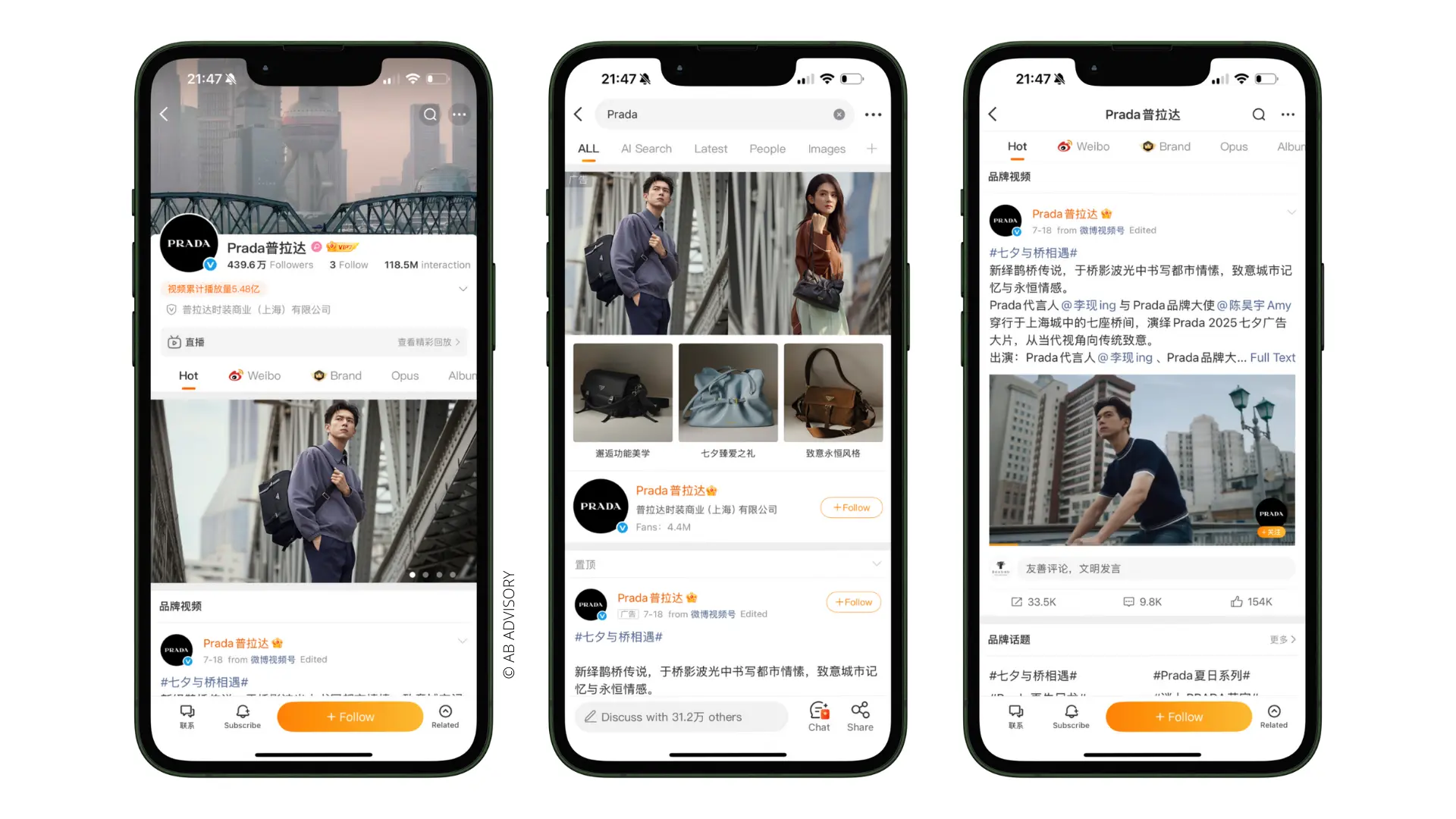
In brief, there are 2 types of accounts:
- Personal Accounts: They are regular accounts for everyday users to post content, follow others, and interact.
- Verified Accounts: It corresponds to the accounts with a “V”. These verification badges can help you identify credible individuals, influencers, brands, and organizations.
Let’s review the different verified accounts.
Yellow V for Celebrities and Personas
The Yellow V always stands for renowned people. It can be celebrities, singers, actors, doctors, scientists, or KOLs. To differentiate the various personas, there are different colors among the Yellow V verification. They are:
- Yellow V: They are basic verified personal accounts or micro-infleuncers with at least 10K loyal fans and over 100K post views in the past 30 days.
- Orange V: They are second tier or mid-level influencers with 100K loyal fans, over 1M followers, and over 300K post views in the past 30 days.
- Golden V: They are celebrities or first-tier creators, with at least 1M loyal fans, and over 10M post views in the past 30 days.
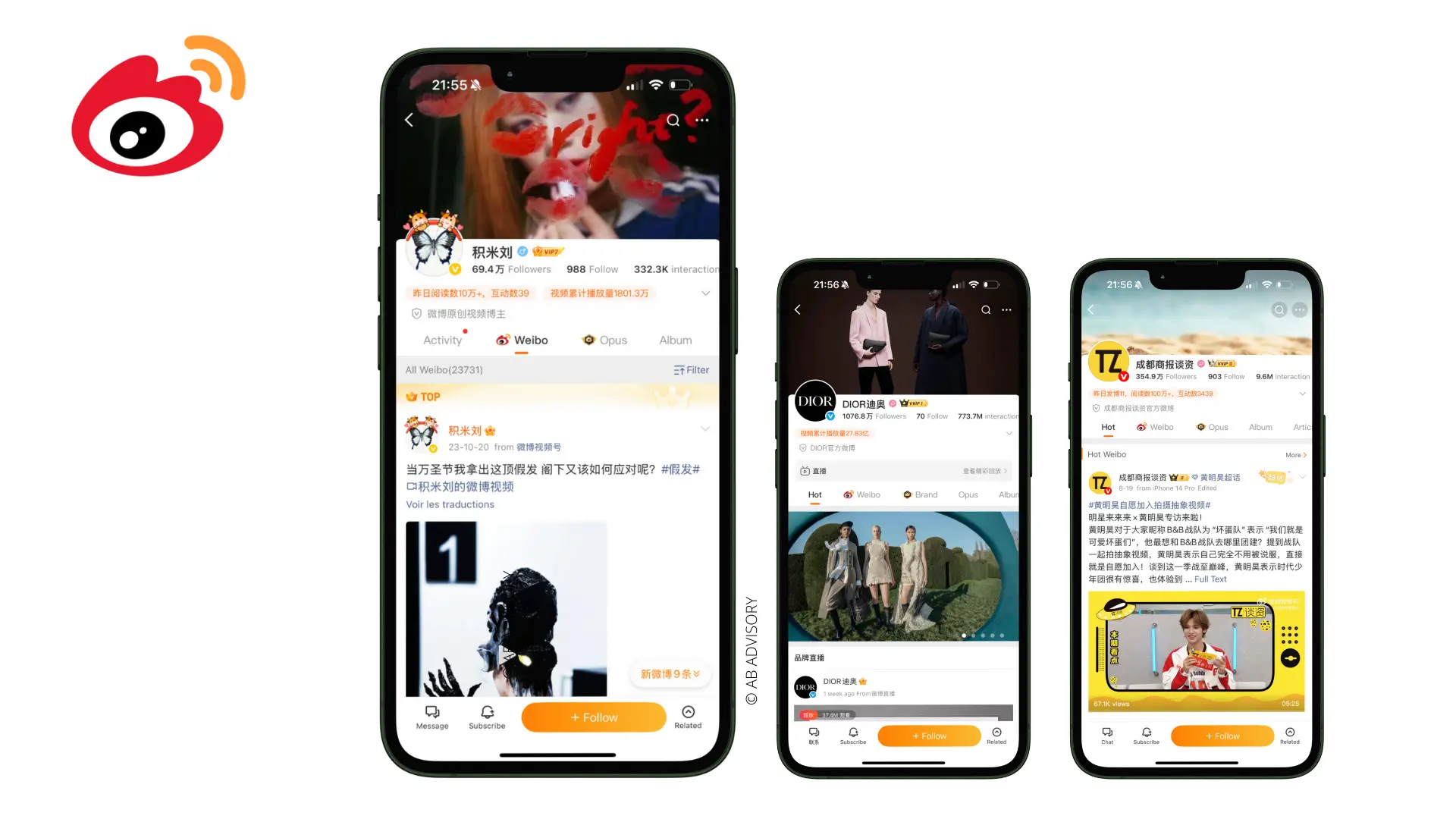
In this category, loyal fans mean the fans or followers who interacted at least 3 times in the past 30 days with the account.
Now let’s see how it works for brands.
Blue V for Brands and Organizations
When you discover a Blue V next to an account, it means it is either a brand, governmental department, university, non-profit institution, or other types of organizations. There are no requirements for fan base. The majority of brands and companies that want to communicate in China will request the Blue V to install authority and recognition.
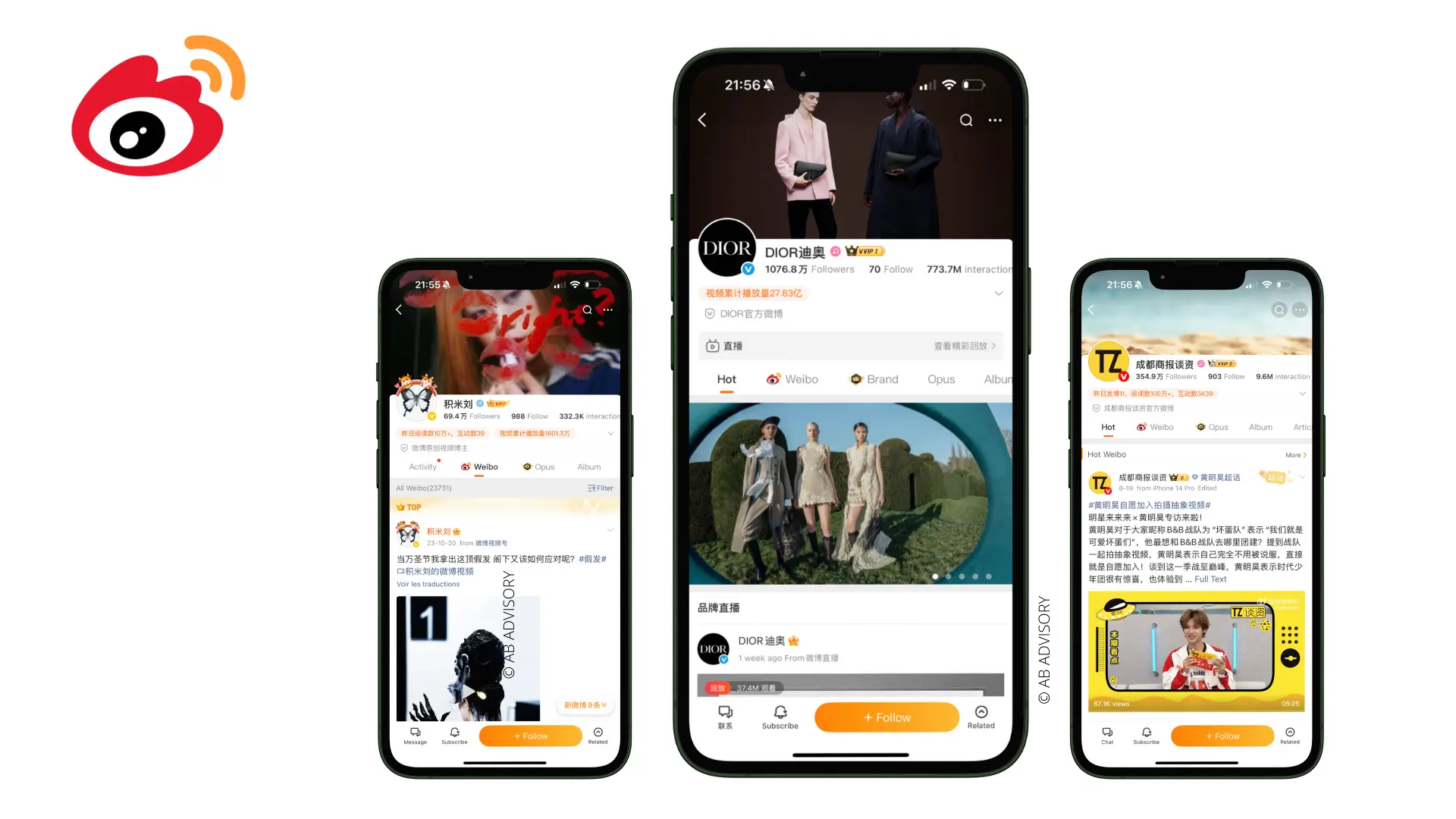
To obtain a Blue V for your official account, you must provide a valid business licenses and other legal documents. The audit can take several weeks, approximately 4 weeks in general to pass the verification.
Red V for Media and Institutions
Finally, the Red V is reserved for the national elite and provincial media. For instance, People’s Daily, Xinhua News, Hunan TV and other official media carry a Red V badge. These special badges distinguish them as official and high-authority institutions.
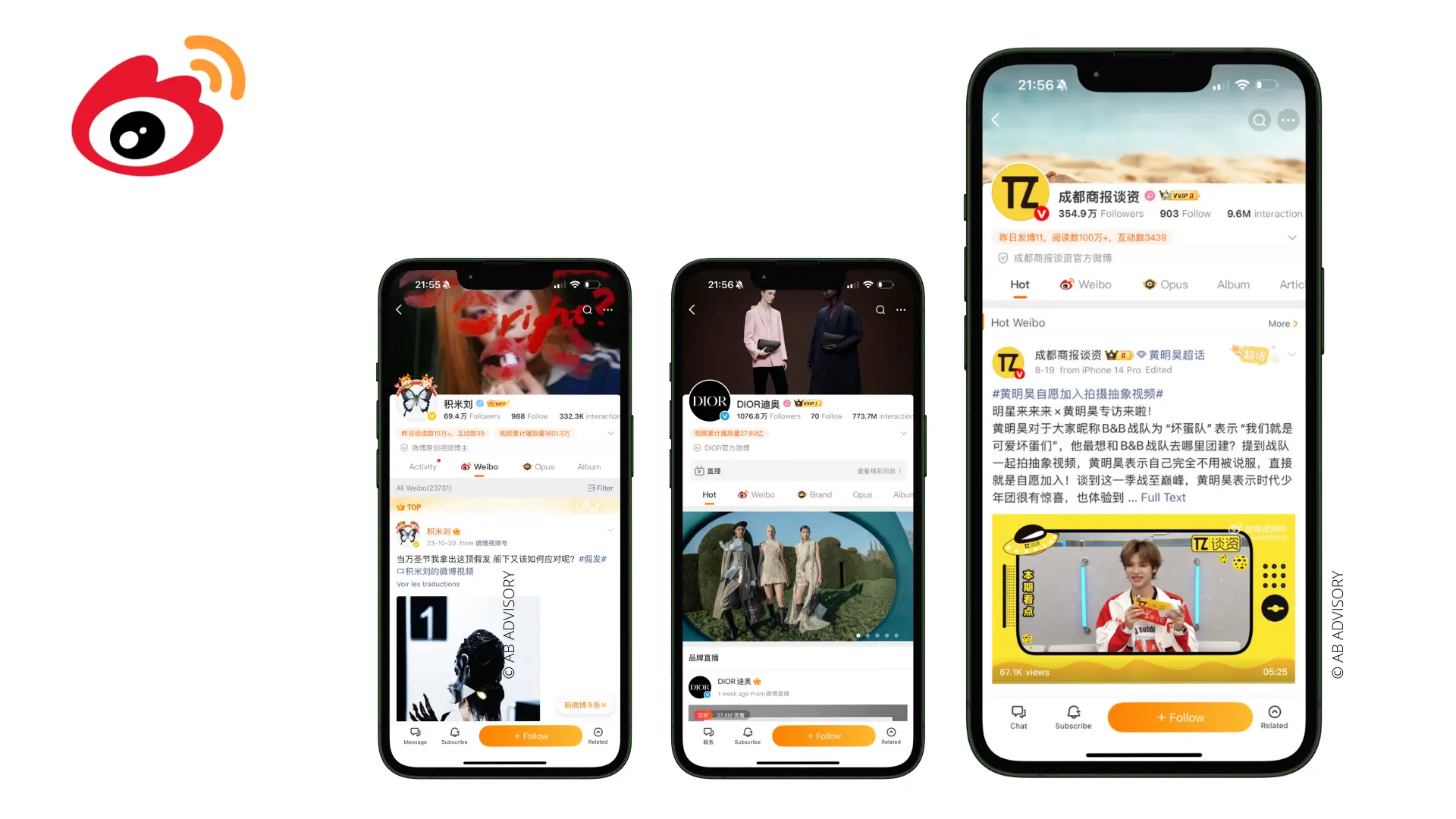
Now, let’s move to the key features on Weibo.
Key Features for Weibo Marketing
When you use Weibo for your brand marketing, you have access to a large pool of features. While the majority of them (hashtags, post, repost) can be similar to other social media, a few features are different. And they may be your key to success.
Let’s dive in the Weibo features:
- Hashtags: You can choose/search from the existing hashtags categorized by Weibo or create your own. It is recommended for brands to create 1 or 2 of their own hashtags.
- Reposts: Reposts are similar to Twitter’s retweet function. From 2024, reposts can include up to 500 characters.
- Long posts: Long posts are like full-size blog articles which are displayed with a header image, short introduction, and a link to the whole content.
- Selected posts: You can curate selected posts on your Weibo page. It is a handpicked collection of high quality or high engagement posts. It is recommended to pin the posts related to your sales channels for a strong O2O conversion.
- Super Topics: A super topic is like an enhanced hashtag, marked with a diamond icon. It can also lead to a dedicated landing page with all related posts, top contributors, and followers, which works as a community hub.
- Hot Search List: Similar to Twitter, Weibo features a dynamic “hot search list” (热搜) that showcases trending topics across the platform in real time.
In brief, Weibo is offering a full ecosystem.
Legal and Cultural Rules on Weibo
In China, each social media has its own “bible” of forbidden words and rules.
If you want to succeed on Weibo, you’ll need to know them well.
Content Regulations and Censorship
The content you post on Weibo must comply with Chinese laws and regulations. This requirement is valid for any social media, may it be RED, Douyin, WeChat, or Bilibili. In addition to the Chinese laws, you will also need to comply with Weibo’s terms of service.
You can access the Weibo terms of services here.
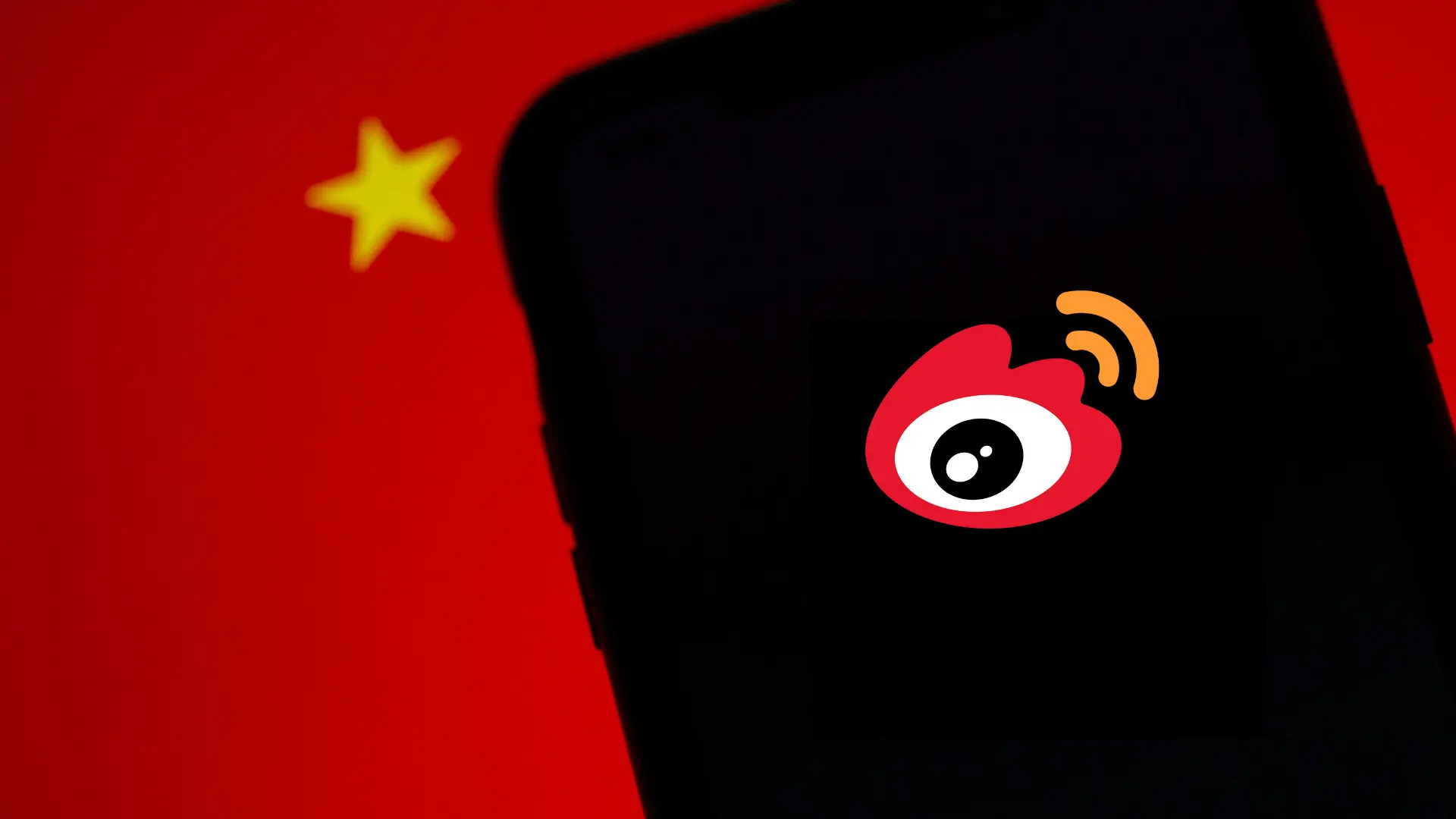
And if you are bothered, here is a quick recap:
- Avoid sensitive topics. All accounts shall not publish content related to political sensitive issues, controversial historical events, or topics that may provoke division or social unrest.
- Avoid cyberbullying, personal attacks, hate or discriminatory speech, false, vulgar and extremist content. All posts containing sensitive keywords may be automatically blocked or hidden from public view. We can help you ensure compliance and avoid any risks or delays with your posts.
- Avoid inauthentic engagement. All purchase of fake followers or hire of fake engagement is strictly against Weibo’s policies. The accounts may be blocked partially or totally in this situation.
And I think we shall stop on this last point.
The Trend of Fake Data in China
In China, it is very common for agencies to arrive with outstanding numbers: huge followers base and high rates of likes, reposts, and comments for all their clients. Today, it is very common that agencies propose inauthentic engagement – it has become a “public secret”. And you may talk with one of them right now.
When I’m in a meeting with a new brand, it is very common to see this point arriving on the table. They often want KPIs and compare the other data they receive from other agencies:
- “We can reach 1M followers on Weibo in less than 1 year”
- “On average our posts reach 500K views”
- “The monthly growth of followers and views is always at a rate of +20%”
This magic growth is a pure purchase of fake followers and views.

In that case, such behaviors can not help you with anything but harm the brand’s reputation. Weibo’s algorithm does not support accounts with inauthentic engagement, either. To optimize organic engagement, you will need to work with a Chinese social media expert like AB ADVISORY to help you develop a tailored strategy – with data that fluctuates because you will actually build authentic conversations with your customers.
Now, it’s time to effectively see how we build our magic on Weibo.
And how to leverage Weibo for marketing and sales in China.
Let’s dive in.
How to Use Weibo for Business and Marketing?
Weibo is a key social media for your strategy in China if you do it the right way. First of all, you should not give this responsibility to a Chinese intern but work with a team of marketers with experience on the platform. Because the opening of your account can already be decisive.
1. Create a Brand Official Account
The first thing you need to do is to create a Brand Official Account. During the registration process, you will need to ensure to select “brand official account setup” instead of “personal account setup”.
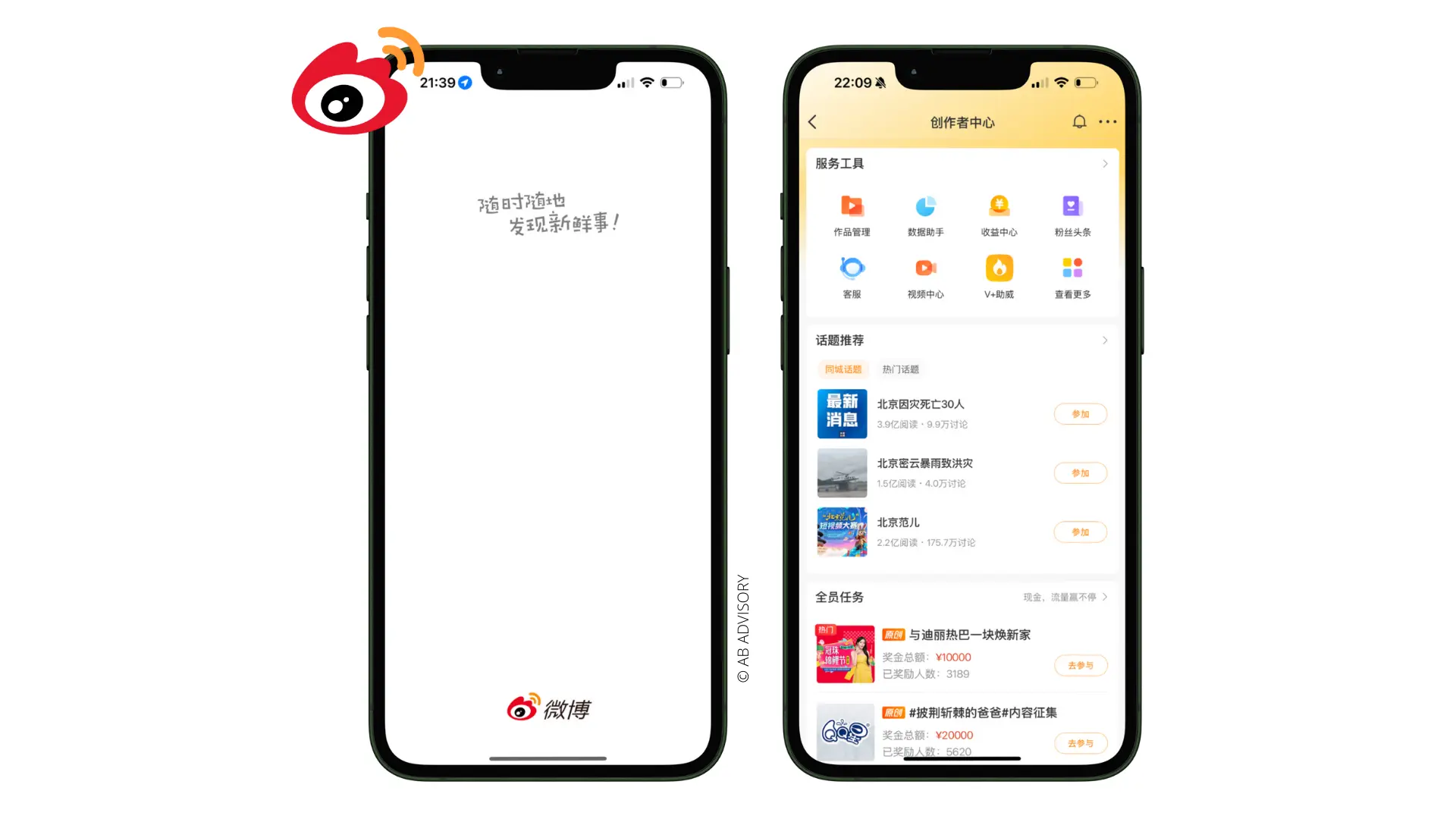
If you already have a personal account, you can upgrade it by going through the “V verification” .
You need to consult a Weibo official partner (like us!), fill in the form, send the requested documents, and finalize the setup. All this process is in Chinese and the Weibo team may ask you to translate your business license and trademark into Chinese. So, it’s better to work with a local agency.
You can contact us if you need support on the registration or translation.
2. Generate Weibo-friendly Content
The majority of Weibo netizens will always prefer dynamic and entertaining content like pictures or reel videos. The Chinese G will favor brand accounts that use memes. They reveal a more “human side” of the brand and make it feel part of the local culture. In the meantime, posts in collaboration with stars or celebrities often get higher engagement rate and are ideal for brand exposure on Weibo.
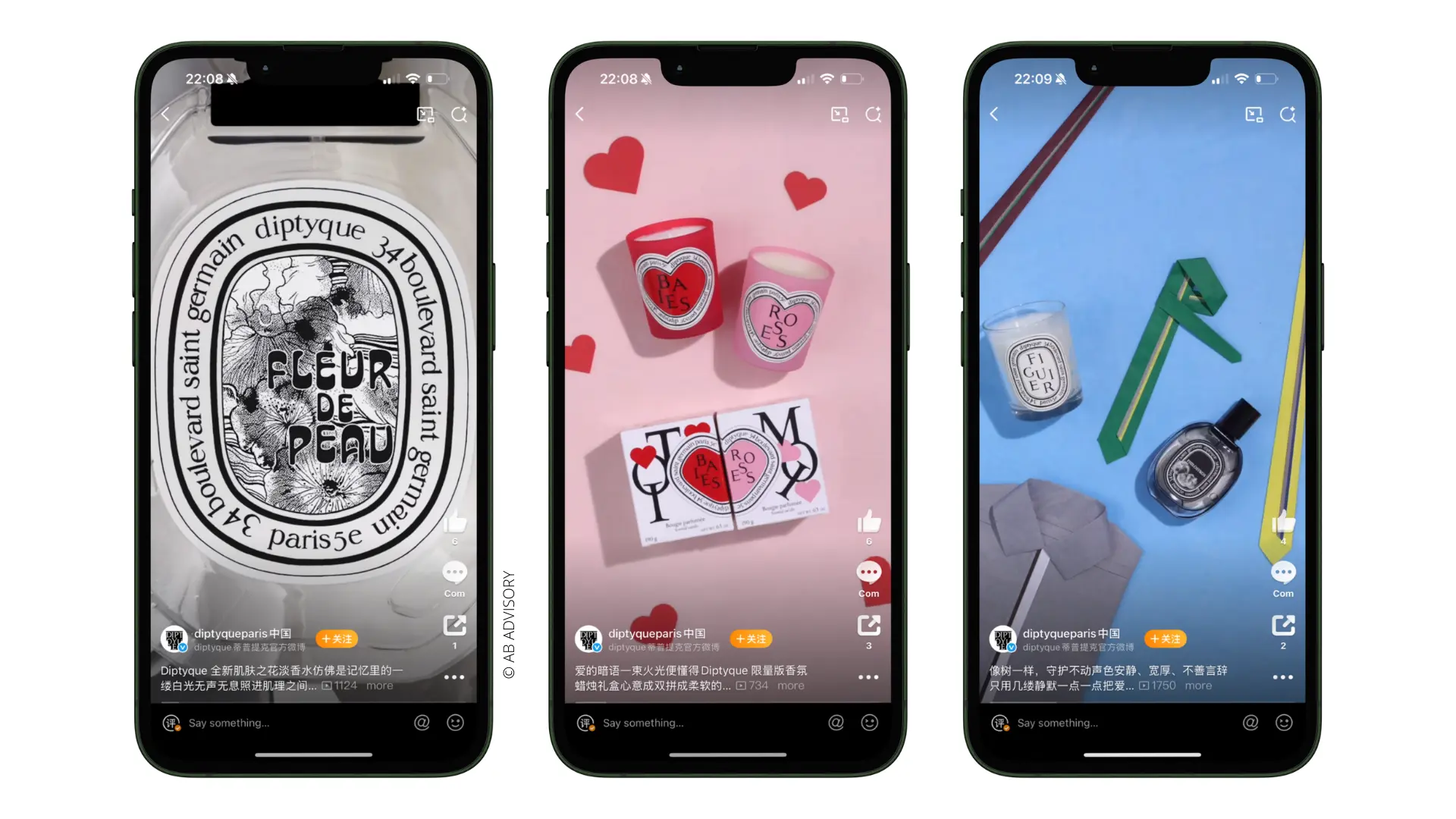
After the right content, you will need to pick the right time.
You need to post at least 2 times per week to stay active. For faster growth and higher engagement, you can post 3 to 5 times per week. When it comes to important campaigns and events, posting once or twice daily is also possible, but be careful not to overwhelm your followers or cannibalize your content.
Posting during workday mornings or evenings usually gets better reach.
You will also need to watch your data and adjust your frequency based on YOUR audience reaction.
3. Leverage the In-App Advertising
Weibo’s advertising system is complex but mainly divided into two types : display ads and promoted posts.
- Display Ads: They are ad formats that gain prominent placement on Weibo to boost brand visibility. These include: destination page ads, search page ads, hashtag promotion ads and banner ads.
- Promoted Posts: They are similar to boosted posts on Instagram. You can use Weibo’s Fan headlines and Super Fan Pro to manage them.
If you want to know more, you can read our dedicated article on Weibo advertising.
4. Collaborate with Weibo Influencers & KOLS
In general, Weibo KOLs (Key Opinion Leaders) can be segmented by follower count and influence level. Each social media has its own ranking as influencers will always have more followers on Weibo than on RED. In that sense, the following tier-ranking is only valid for Weibo:
- Top-Tier Celebrities: 10M+ Followers. They are ideal for brand endorsements and large-scale awareness campaigns;
- Tier-1 KOLs: 5M+ Followers. They are great for major campaign amplification;
- Mid-Tier KOLs: 1M to 3M Followers. They are effective for daily product promotion and conversion;
- Micro KOLs: <1M Follower. They are best for niche targeting and community-level buzz.
Based on this, the collaboration rate with KOLs varies. For instance, a KOL with less than 1 million follower may have a rate between 3,000 and 30,000 RMB (375€ to 3,750€). However, a KOL with over 10 million followers can have a rate between 50,000 and 200,000 RMB (6,250€ to 25,000€).
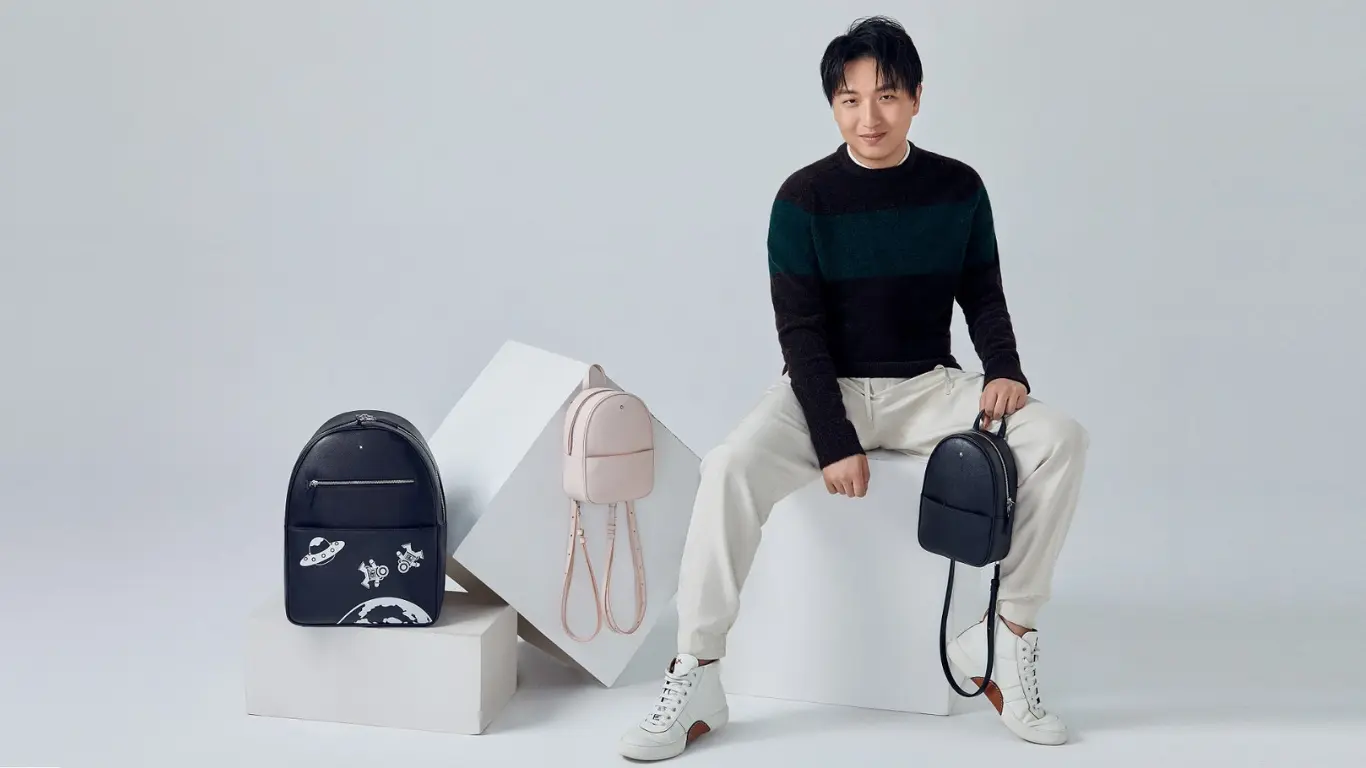
In addition, videos and livestreams generally cost more than images or text posts.
And during holidays or sales seasons (like Double 11), the rate will also increase.
In brief, identifying the right KOLs and time will be essential for your ROI.
5. Monitor Campaigns with Weibo Analytics
When running a paid campaign, Weibo provides a dedicated data center for brands to monitor real-time campaign performance. It can analyze not only campaign’s views, engagement, conversions, but also the consumer sentiment, secondary share rate, audience demographics, etc.
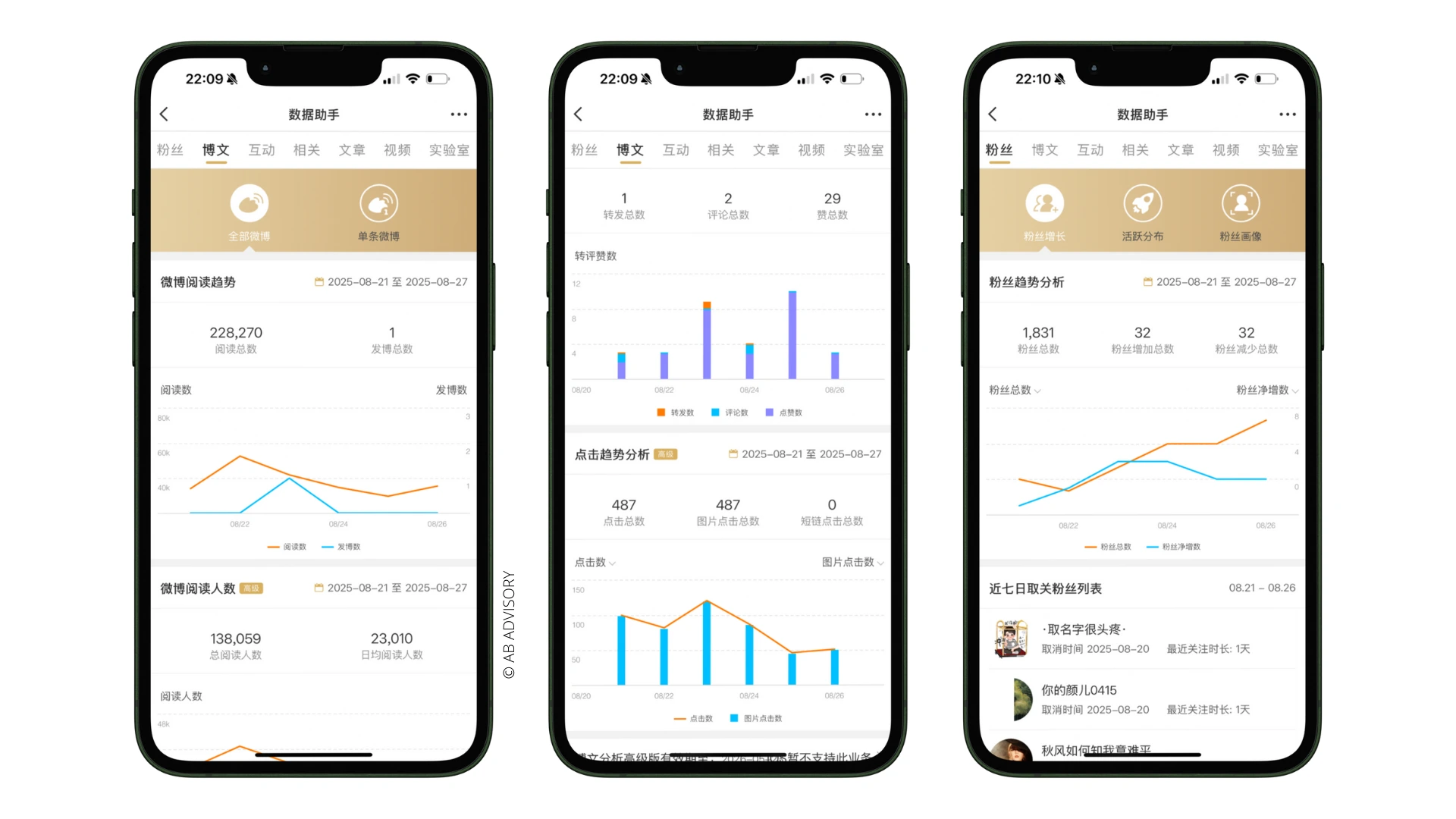
If you want to gain deeper insights of the data, you can use some third-party monitoring tools as well. This is the kind of data (real data, if you followed me until there) that we share every month to our clients in our Monthly Report. Because this data will give you insights, not only on your account – but on your consumers.
And this is how you build success in China with Weibo.
Future of Weibo: Trends to Watch in 2025 and Beyond
Before ending our guide, I thought it would be good to give you more visibility on the latest developments and updates of Weibo. Some new features that you can now use for your brand in China.
Let’s have a look.
Weibo Platform Marketing Innovation
Some observers argue that Weibo is becoming marginalized amid the rise of short-video platforms like Douyin, Xiaohongshu, and Kuaishou. These platforms offer more direct ROI tracking and closed-loop e-commerce, making performance marketing seemingly easier.
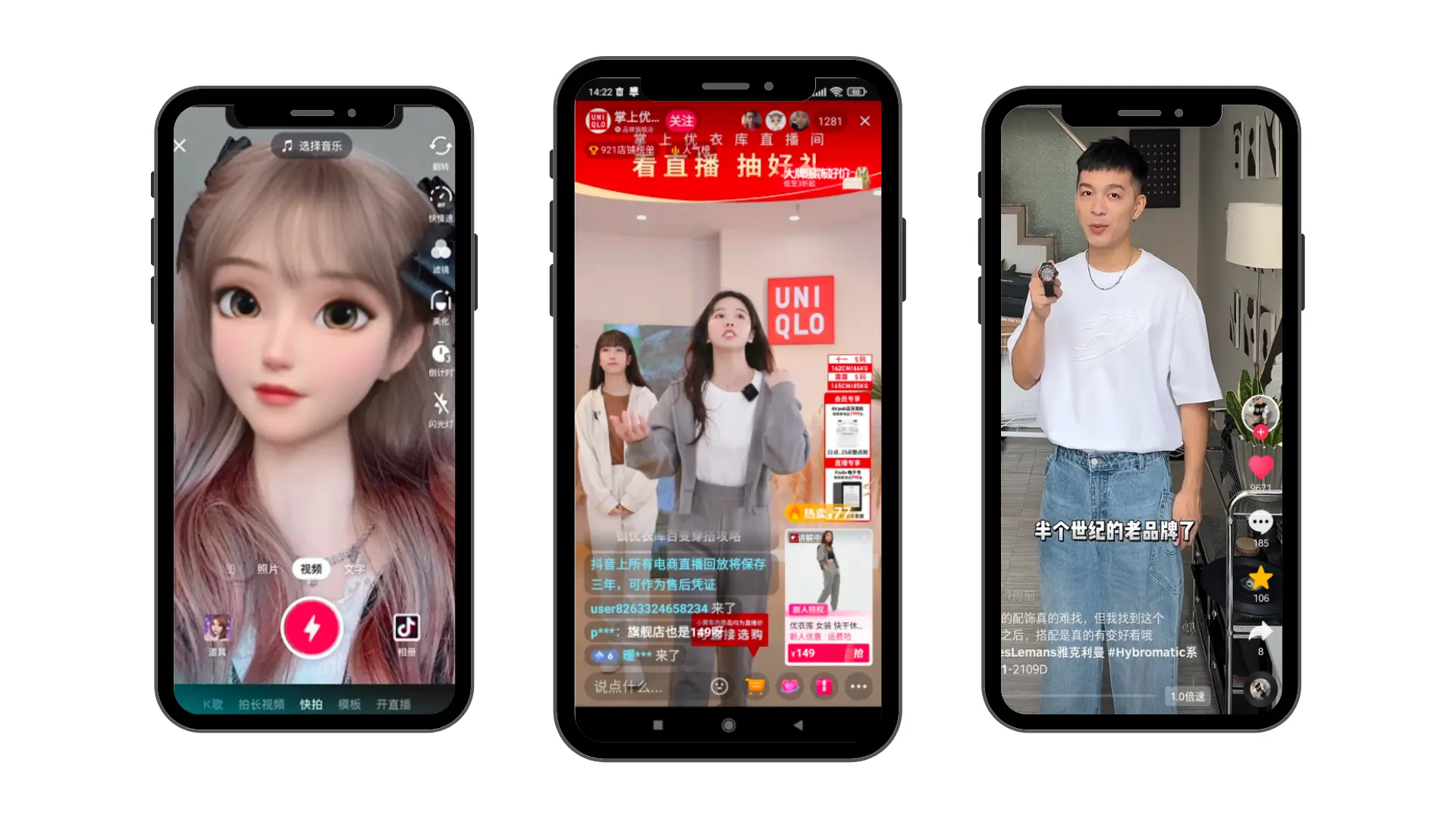
However, Weibo’s core value lies in its ability to generate nationwide conversation, especially around breaking news, trending topics, and national events. By aligning the posts or campaigns with trending topics and hot search, sometimes brands can go beyond paid exposure to achieve overnight virality. Even without celebrity or KOL partnerships, you can engage with national holidays and cultural moments in China to generate buzz.
This is how we manage to reach 1 million views per month for new brands arriving in China.
Building brand exposure overnight.
Weibo E-Commerce Integration
Weibo has established strong and ongoing partnerships with other e-commerce platforms in China, especially with Tmall. If you have e-commerce stores on Tmall or Taobao, you can directly integrate the link of your Tmall product page on your Weibo post. This great tool enable brands to have a direct conversion from viewer to buyer.
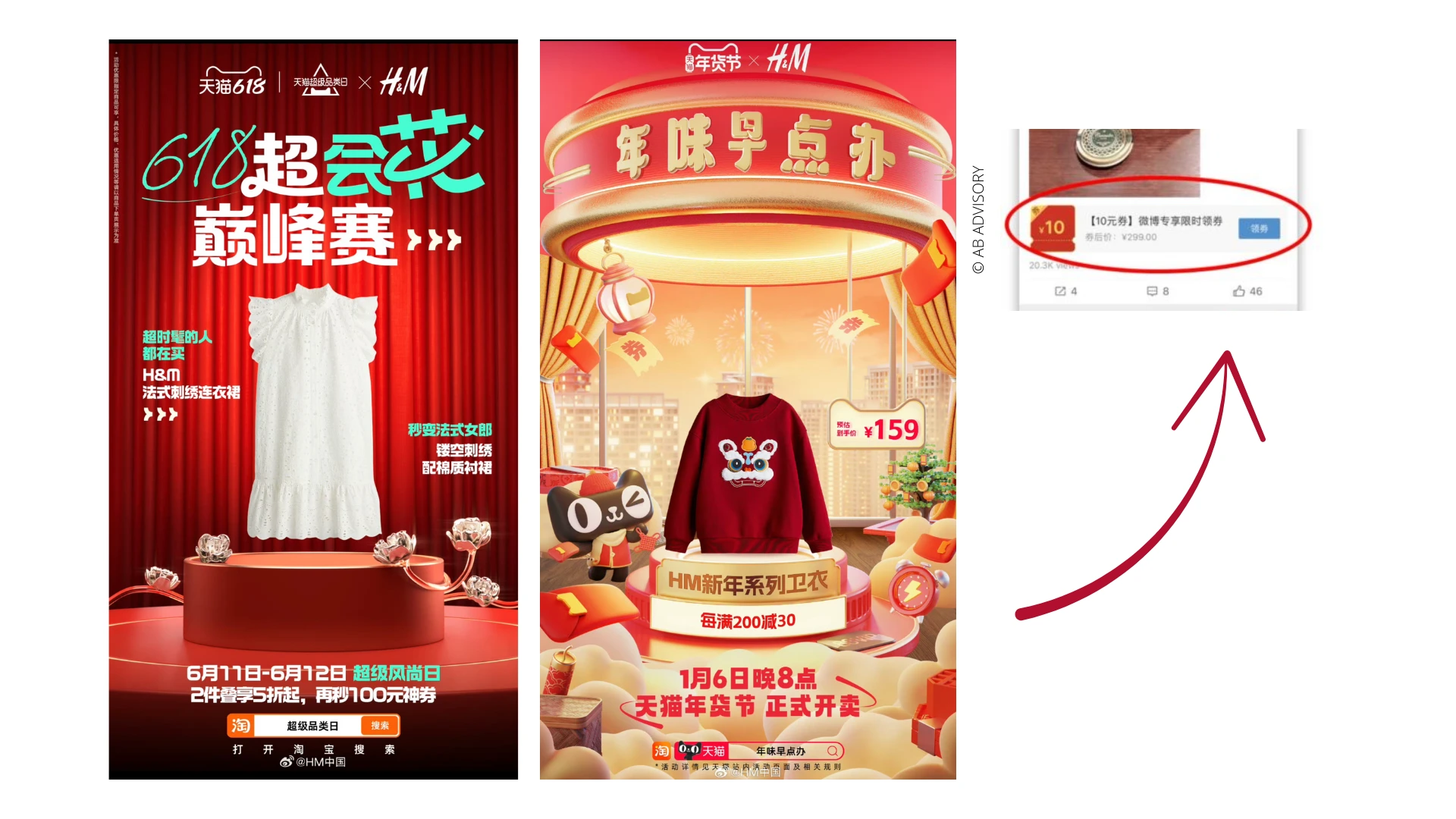
You can also open a Weibo MInil Shop (“微博小店”). This tool is the built-in e-commerce on Weibo and connect your account to your e-commerce stores on other platforms.
And all these features are just the tip of the iceberg.
There is much more to discover together.
Partner with a Weibo Agency in Shanghai
Last but not least, having a local partner will always help you to grow the right way in China. And by local, I don’t mean a team that is in China. I mean a cross-cultural team that is expert in marketing and in Weibo. A team that analyzes and understands all the latest developments of the platform. Because China is moving fast, and so do you.
So that’s it for this great piece mixing our expertise and knowledge.
AB ADVISORY is the Weibo marketing expert in China. We have created, managed, and promoted several Weibo official accounts on the platform – including the official account of Baobab Collection.
I hope this ultimate Weibo Marketing Guide has been helpful to you.

